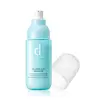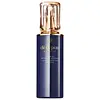What's inside
What's inside
 Key Ingredients
Key Ingredients

 Benefits
Benefits

 Concerns
Concerns

No concerns
 Ingredients Side-by-side
Ingredients Side-by-side

Water
Skin ConditioningDipropylene Glycol
HumectantButylene Glycol
HumectantGlycerin
HumectantHydrogenated Polydecene
EmollientDimethicone
EmollientTranexamic Acid
AstringentErythritol
HumectantTrehalose
HumectantXylitol
HumectantPEG/PPG-17/4 Dimethyl Ether
Skin ConditioningPEG-60 Glyceryl Isostearate
Pentaerythrityl Tetraethylhexanoate
EmollientPEG-5 Glyceryl Stearate
EmulsifyingPhenoxyethanol
PreservativeCetyl Ethylhexanoate
EmollientBehenyl Alcohol
EmollientTheanine
EmollientDimethylacrylamide/Sodium Acryloyldimethyltaurate Crosspolymer
Carbomer
Emulsion StabilisingBatyl Alcohol
EmollientHydrogenated Palm Oil
EmollientElaeis Guineensis Kernel Oil
EmollientDipotassium Glycyrrhizate
HumectantElaeis Guineensis Oil
EmollientSodium Metaphosphate
BufferingPotassium Hydroxide
BufferingPhytosteryl/Octyldodecyl Lauroyl Glutamate
Skin ConditioningSodium Metabisulfite
AntioxidantSaccharomyces Ferment Lysate Filtrate
Skin ConditioningPEG/PPG-14/7 Dimethyl Ether
Skin ConditioningTocopherol
AntioxidantCitric Acid
BufferingWater, Dipropylene Glycol, Butylene Glycol, Glycerin, Hydrogenated Polydecene, Dimethicone, Tranexamic Acid, Erythritol, Trehalose, Xylitol, PEG/PPG-17/4 Dimethyl Ether, PEG-60 Glyceryl Isostearate, Pentaerythrityl Tetraethylhexanoate, PEG-5 Glyceryl Stearate, Phenoxyethanol, Cetyl Ethylhexanoate, Behenyl Alcohol, Theanine, Dimethylacrylamide/Sodium Acryloyldimethyltaurate Crosspolymer, Carbomer, Batyl Alcohol, Hydrogenated Palm Oil, Elaeis Guineensis Kernel Oil, Dipotassium Glycyrrhizate, Elaeis Guineensis Oil, Sodium Metaphosphate, Potassium Hydroxide, Phytosteryl/Octyldodecyl Lauroyl Glutamate, Sodium Metabisulfite, Saccharomyces Ferment Lysate Filtrate, PEG/PPG-14/7 Dimethyl Ether, Tocopherol, Citric Acid
Water
Skin ConditioningAlcohol Denat.
AntimicrobialGlycerin
HumectantDipropylene Glycol
HumectantHydrogenated Polydecene
EmollientDimethicone
EmollientCetyl Ethylhexanoate
EmollientPEG/PPG-14/7 Dimethyl Ether
Skin ConditioningPEG-60 Glyceryl Isostearate
Tricaprylin
MaskingTrehalose
HumectantPotassium Methoxysalicylate
BleachingPEG-5 Glyceryl Stearate
EmulsifyingPhenoxyethanol
PreservativePetrolatum
EmollientStearic Acid
CleansingBehenyl Alcohol
EmollientIsostearic Acid
CleansingBehenic Acid
CleansingCarbomer
Emulsion StabilisingPotassium Hydroxide
BufferingButylene Glycol
HumectantTheanine
EmollientBatyl Alcohol
EmollientPEG/PPG-17/4 Dimethyl Ether
Skin ConditioningTocopheryl Acetate
AntioxidantXanthan Gum
EmulsifyingPhytosteryl Macadamiate
Skin ConditioningPolyquaternium-51
Skin ConditioningParfum
MaskingAlcohol
AntimicrobialSodium Metaphosphate
BufferingDisodium EDTA
Dipotassium Glycyrrhizate
HumectantSodium Acetylated Hyaluronate
HumectantSodium Metabisulfite
AntioxidantAlpha-Isomethyl Ionone
PerfumingCitronellol
PerfumingLinalool
PerfumingOlea Europaea Leaf Extract
PerfumingGeraniol
PerfumingPaeonia Albiflora Root Extract
Skin ConditioningBenzyl Benzoate
AntimicrobialHydrolyzed Silk
HumectantSerine
MaskingRubus Suavissimus Leaf Extract
Skin ConditioningCI 77491
Cosmetic ColorantCI 77492
Cosmetic ColorantCinnamomum Cassia Bark Extract
MaskingLavandula Angustifolia Oil
MaskingTocopherol
AntioxidantBupleurum Falcatum Root Extract
Skin ConditioningBenzoic Acid
MaskingUncaria Gambir Extract
AstringentAngelica Acutiloba Root Extract
Skin ConditioningRosa Roxburghii Fruit Extract
TonicHydrolyzed Conchiolin Protein
Skin ConditioningHouttuynia Cordata Extract
Skin ConditioningWater, Alcohol Denat., Glycerin, Dipropylene Glycol, Hydrogenated Polydecene, Dimethicone, Cetyl Ethylhexanoate, PEG/PPG-14/7 Dimethyl Ether, PEG-60 Glyceryl Isostearate, Tricaprylin, Trehalose, Potassium Methoxysalicylate, PEG-5 Glyceryl Stearate, Phenoxyethanol, Petrolatum, Stearic Acid, Behenyl Alcohol, Isostearic Acid, Behenic Acid, Carbomer, Potassium Hydroxide, Butylene Glycol, Theanine, Batyl Alcohol, PEG/PPG-17/4 Dimethyl Ether, Tocopheryl Acetate, Xanthan Gum, Phytosteryl Macadamiate, Polyquaternium-51, Parfum, Alcohol, Sodium Metaphosphate, Disodium EDTA, Dipotassium Glycyrrhizate, Sodium Acetylated Hyaluronate, Sodium Metabisulfite, Alpha-Isomethyl Ionone, Citronellol, Linalool, Olea Europaea Leaf Extract, Geraniol, Paeonia Albiflora Root Extract, Benzyl Benzoate, Hydrolyzed Silk, Serine, Rubus Suavissimus Leaf Extract, CI 77491, CI 77492, Cinnamomum Cassia Bark Extract, Lavandula Angustifolia Oil, Tocopherol, Bupleurum Falcatum Root Extract, Benzoic Acid, Uncaria Gambir Extract, Angelica Acutiloba Root Extract, Rosa Roxburghii Fruit Extract, Hydrolyzed Conchiolin Protein, Houttuynia Cordata Extract
Ingredients Explained
These ingredients are found in both products.
Ingredients higher up in an ingredient list are typically present in a larger amount.
We don't have a description for Batyl Alcohol yet.
Behenyl Alcohol is a type of fatty alcohol (these are different from the drying, solvent alcohols).
Fatty Alcohols have hydrating properties and are most often used as an emollient or to thicken a product. They are usually derived from natural fats and oils; behenyl alcohol is derived from the fats of vegetable oils.
Emollients help keep your skin soft and hydrated by creating a film that traps moisture in.
In 2000, Behenyl Alcohol was approved by the US as medicine to reduce the duration of cold sores.
Learn more about Behenyl AlcoholButylene Glycol (or BG) is used within cosmetic products for a few different reasons:
Overall, Butylene Glycol is a safe and well-rounded ingredient that works well with other ingredients.
Though this ingredient works well with most skin types, some people with sensitive skin may experience a reaction such as allergic rashes, closed comedones, or itchiness.
Learn more about Butylene GlycolCarbomer is a polymer of acrylic acid. Its main role is to create a gel consistency.
A high amount of carbomer can cause pilling or balling up of products. Don't worry, most products contain 1% or less of carbomer.
Cetyl Ethylhexanoate is an emollient ester. It comes from cetearyl alcohol and 2-ethylhexanoic acid.
Cetyl Ethylhexanoate is an emollient that adds a velvety feel to skin without being greasy or oily. Emollients help trap moisture into your skin, keeping your skin soft and hydrated.
Dimethicone is a type of synthetic silicone created from natural materials such as quartz.
What it does:
Dimethicone comes in different viscosities:
Depending on the viscosity, dimethicone has different properties.
Ingredients lists don't always show which type is used, so we recommend reaching out to the brand if you have questions about the viscosity.
This ingredient is unlikely to cause irritation because it does not get absorbed into skin. However, people with silicone allergies should be careful about using this ingredient.
Note: Dimethicone may contribute to pilling. This is because it is not oil or water soluble, so pilling may occur when layered with products. When mixed with heavy oils in a formula, the outcome is also quite greasy.
Learn more about DimethiconeDipotassium Glycyrrhizate comes from licorice root.
Extracts of licorice have demonstrated to have antibacterial, anti‐inflammatory, antiviral, antioxidant properties.
One component, glabridin, has extra potent antioxidant and soothing properties. It has also been found to block pigmentation from UVB rays in guinea pigs.
Licorice Root also contains a flavonoid. Flavonoids are a natural substance from in plants. Flavonoids also have antioxidant properties.
Another component, glycyrrhizin, has been found to have anti-inflammatory and antimicrobial benefits. This may make licorice root extract effective at treating acne. However, more research is needed to support this.
Liquiritin is one of the flavone compounds found in licorice. It has been found to help lighten skin by preventing tyrosinase from reacting with tyrosine. When the two react, protein is converted to melanin. Melanin is the substance in your body that gives your features pigmentation.
Licorice root is native to Southern Europe and Asia. It has been used in traditional Chinese medicine to help with respiratory issues.
Learn more about Dipotassium GlycyrrhizateDipropylene Glycol is a synthetically created humectant, stabilizer, and solvent.
This ingredient helps:
Dipropylene glycol is technically an alcohol, but it belongs to the glycol family (often considered part of the ‘good’ alcohols). This means it is hydrating and gentle on skin unlike drying solvent alcohols like denatured alcohol.
As a masking agent, Dipropylene Glycol can be used to cover the smell of other ingredients. However, it does not have a scent.
Studies show Dipropylene Glycol is considered safe to use in skincare.
Learn more about Dipropylene GlycolGlycerin is already naturally found in your skin. It helps moisturize and protect your skin.
A study from 2016 found glycerin to be more effective as a humectant than AHAs and hyaluronic acid.
As a humectant, it helps the skin stay hydrated by pulling moisture to your skin. The low molecular weight of glycerin allows it to pull moisture into the deeper layers of your skin.
Hydrated skin improves your skin barrier; Your skin barrier helps protect against irritants and bacteria.
Glycerin has also been found to have antimicrobial and antiviral properties. Due to these properties, glycerin is often used in wound and burn treatments.
In cosmetics, glycerin is usually derived from plants such as soybean or palm. However, it can also be sourced from animals, such as tallow or animal fat.
This ingredient is organic, colorless, odorless, and non-toxic.
Glycerin is the name for this ingredient in American English. British English uses Glycerol/Glycerine.
Learn more about GlycerinHydrogenated Polydecene is an emollient. It creates a non-occlusive film on the skin that offers extra protection for your skin barrier.
The texture of Hydrogenated Polydecene ranges from light and silky to rich.
Hydrogenated Polydecene is the end compound of controlled hydrogenation of Polydecene.
Learn more about Hydrogenated PolydecenePEG-5 Glyceryl Stearate isn't fungal acne safe.
PEG-60 Glyceryl Isostearate isn't fungal acne safe.
We don't have a description for PEG/PPG-14/7 Dimethyl Ether yet.
We don't have a description for PEG/PPG-17/4 Dimethyl Ether yet.
Phenoxyethanol is a preservative that has germicide, antimicrobial, and aromatic properties. Studies show that phenoxyethanol can prevent microbial growth. By itself, it has a scent that is similar to that of a rose.
It's often used in formulations along with Caprylyl Glycol to preserve the shelf life of products.
Potassium hydroxide is commonly known as caustic potash. It is used to fix the pH of a product or as a cleaning agent in soap. In cleansers, it is used for the saponification of oils.
Sapnification is the process of creating fatty acid metal salts from triglycerides and a strong base. During this process, Potassium Hydroxide is used up and is not present in the final product.
Using high concentrations of Potassium Hydroxide have shown to irritate the skin.
Learn more about Potassium HydroxideSodium metabisulfite is also known as Sodium Pyrosulfite. It is a preservative, antioxidant, and disinfectant.
As a preservative, it helps stabilize cosmetic formulas without affecting their color or scent.
We don't have a description for Sodium Metaphosphate yet.
Theanine is an amino acid found in plants and fungal species. It helps hydrate the skin as an emollient and humectant.
Both emollients and humectants help hydrate the skin. Emollients prevent moisture from escaping by creating a thin film on top of the skin. Humectants draw water from the air to your skin.
Fun fact: Theanine gives green tea its special umami flavor.
Learn more about TheanineTocopherol (also known as Vitamin E) is a common antioxidant used to help protect the skin from free-radicals and strengthen the skin barrier. It's also fat soluble - this means our skin is great at absorbing it.
Vitamin E also helps keep your natural skin lipids healthy. Your lipid skin barrier naturally consists of lipids, ceramides, and fatty acids. Vitamin E offers extra protection for your skin’s lipid barrier, keeping your skin healthy and nourished.
Another benefit is a bit of UV protection. Vitamin E helps reduce the damage caused by UVB rays. (It should not replace your sunscreen). Combining it with Vitamin C can decrease sunburned cells and hyperpigmentation after UV exposure.
You might have noticed Vitamin E + C often paired together. This is because it is great at stabilizing Vitamin C. Using the two together helps increase the effectiveness of both ingredients.
There are often claims that Vitamin E can reduce/prevent scarring, but these claims haven't been confirmed by scientific research.
Learn more about TocopherolTrehalose is a disaccharide made of two glucose molecules (glucose is sugar!). Trehalose is used to help moisturize skin. It also has antioxidant properties.
As a humectant, trehalose helps draw moisture from the air to your skin. This helps keep your skin hydrated.
Due to its antioxidant properties, trehalose may help with signs of aging. Antioxidants help fight free-radical molecules, unstable molecules that may damage your skin.
In medicine, trehalose and hyaluronic acid are used to help treat dry eyes.
Some animals, plants, and bacteria create trehalose as a source of energy to survive freeze or lack of water.
Learn more about TrehaloseWater. It's the most common cosmetic ingredient of all. You'll usually see it at the top of ingredient lists, meaning that it makes up the largest part of the product.
So why is it so popular? Water most often acts as a solvent - this means that it helps dissolve other ingredients into the formulation.
You'll also recognize water as that liquid we all need to stay alive. If you see this, drink a glass of water. Stay hydrated!
Learn more about Water